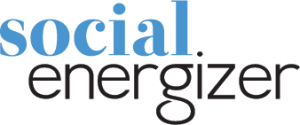Business Management
Dynamic Websites and What They Mean For Your Small Business
There are a lot of people out there suggesting that a small business owner can create their website overnight. And you can. But will it do what you want it to do? photo © 2007 Ben Zvan | more info (via: Wylio) What exactly do you want it to do? Are you happy with a…
Read MoreAttention, please
Frazzled? Me, too. Leave it to Chris Brogan to help us find our ‘center’. Check out his short video entitled, “What Has Your Attention“. He sure set me straight. I think this is something that all entrepreneurs and small business folks struggle with. Sometimes there are so many choices of what you COULD do that you…
Read MoreDon’t Give People What They Want
I came across a great quote today while reading “Blue Ocean Strategy: How to Create Uncontested Market Space and Make the Competition Irrelevant” by W. Chan Kim and Renee Mauborgne (Harvard Business Review Press, 2005). Samuel “Roxy” Rothapfel, previously a nickelodeon owner, started up Palace Theaters. By using the low-cost, lower-quality nickelodeon style of entertainment,…
Read MoreRule 1 for Social Media Measurement
If you’re going to participate, you must measure! That is the first rule in social media measurement otherwise known as web analytics. Your website is your basecamp and that is where most people start and end with social media measurement. It’s simply not enough. One of the strengths of social media is that it is…
Read MoreHow Small Businesses Get the Most from Social Media
Just how are small businesses using social media? What level of online presence should you have? One way to start is to review what other small business owners are doing and model it after them. Once again our friends at Mashable! have provided some insights in their latest Infographics report. In a nutshell, here’s what…
Read MoreMy Favorite Post for Today’s Entrepreneurs
I found this article to hit the nail on the head. Take a look at where you are and what lies ahead. Introspection is always good. The right mindset is better. And I’ll add Action is vital. The Cowardly Lion’s Guide to Conquering Your Entrepreneurial Fears The ‘close’ to this article is worth repeating, here’s…
Read MoreU.S. Army Launches Social Media Handbook
Just a short post this morning. I found this interesting from our friends at Mashable. It’s a story of how the Army has created and is distributing a handbook to all army personnel and their families on how to handle social media. Mashable says that, “The new social media handbook provides additional tips and best practices,…
Read MoreChris Brogans- What is the Focus and Purpose of Your Blog
I was digging through some of my archives and came across this article from Chris Brogan, one of my favorite thought leaders in the social media arena. It is about the focus and purpose of your blog. Chris starts by suggesting that you, “Ask yourself that question: what is the focus and the purpose of my…
Read MoreOnline FREE, the new Tchochtke
Henry Ford once said, “The man who will use his skill and constructive imagination to see how much he can give for a dollar, instead of how little he can give for a dollar, is bound to succeed.” In today’s inbound marketing terms, this could be the new Holy Grail. Business owners successful at providing…
Read MoreKnow Your Customer’s Customer
One of the basic principles of customer satisfaction is to understand and know your customer’s customer. It is something so simple, and yet sometimes, marketing professionals overlook this. Instead they create campaigns that fit the marketing person’s profile or fancy better than they do the customer or the customer’s customer. Whether you’re selling to a company that…
Read More
